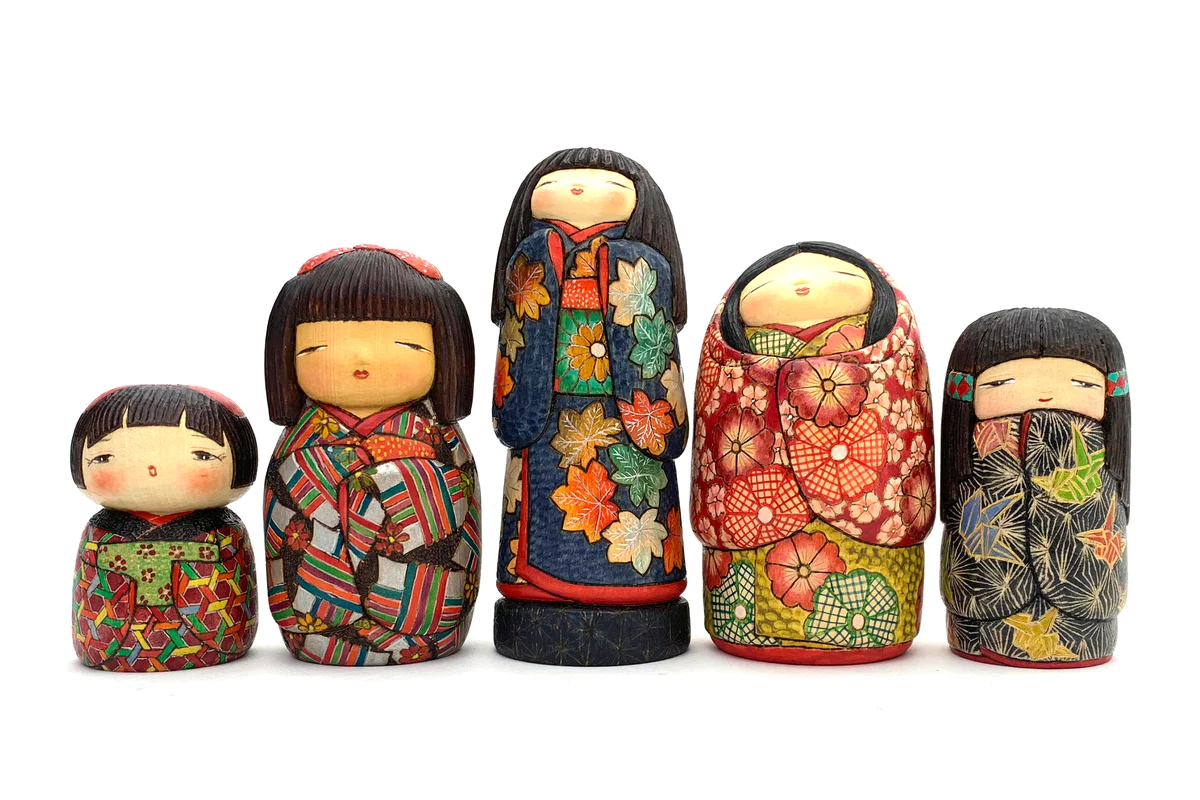Table of Contents
Unlocking the Mystique: The Timeless Appeal of Kokeshi Dolls
Since their creation in the 19th century, Kokeshi Dolls have become an integral part of Japanese art and culture. These simple wooden dolls, with their minimalist design and lack of arms or legs, are a testament to the Japanese ethos of beauty in simplicity. Their enduring charm lies in their ability to capture complex emotions and narratives in the simplest of forms.
History of Kokeshi Dolls
The Kokeshi Dolls brand is steeped in rich history. Originally created in the Tōhoku region of Northern Japan, these dolls were the product of the region’s woodworkers’ creativity during the off-season. The dolls soon evolved into a popular toy for children and a cherished souvenir for travelers. Today, Kokeshi Dolls are recognized worldwide as a symbol of Japanese art and culture.
The Artistry and Craftsmanship of Kokeshi Dolls
The production of a Kokeshi Doll is a meticulous process. The dolls are traditionally handcrafted from a single piece of wood, which is carefully carved and shaped into a cylindrical body with a round head. The doll is then painted with floral designs and facial features, and finally finished with a layer of wax. The result is a doll that is both charming and durable, a perfect blend of functionality and aesthetic appeal.
Categories and Sub-Categories of Kokeshi Dolls
Kokeshi Dolls are divided into two main categories: Traditional Kokeshi and Creative Kokeshi.
- Traditional Kokeshi: These dolls are characterized by their simple, cylindrical form and lack of arms or legs. They are typically painted in red, black, and sometimes yellow, and feature floral designs and a carved pattern on the body. There are eleven sub-categories within Traditional Kokeshi, each representing a different region or style in Japan.
- Creative Kokeshi: These dolls, as the name suggests, allow for more creative freedom. They often feature more elaborate designs, vibrant colors, and varied shapes. Despite their diversity, Creative Kokeshi maintain the essence of the Kokeshi tradition, embodying simplicity and emotion in their design.
Interesting Facts About Kokeshi Dolls
- Did you know that the name ‘Kokeshi’ is derived from two Japanese words, ‘Ko’, meaning ‘small’, and ‘Keshi’, meaning ‘erase’? This could be connected to the dolls’ origin as toys for children.
- Kokeshi Dolls are often given as symbols of friendship or love, reflecting the Japanese tradition of gift-giving to convey sentiments.
FAQs
Q1: What materials are used to make Kokeshi Dolls?
A: Kokeshi Dolls are made from wood, typically cherry or dogwood, which is known for its fine grain and durability.
Q2: How are Kokeshi Dolls painted?
A: The dolls are painted by hand, using traditional Japanese brushes and paints. The facial features are usually the last to be painted, bringing the doll to life.
Q3: Can I customize my Kokeshi Doll?
A: While traditional Kokeshi Dolls follow a specific design, Creative Kokeshi allow for customization, making each doll a unique piece of art.
Q4: How to care for my Kokeshi Doll?
A: Kokeshi Dolls should be kept away from direct sunlight and high humidity. They can be cleaned with a soft, dry cloth.
Q5: Where can I buy Kokeshi Dolls?
A: Kokeshi Dolls are available in various craft stores and online platforms. They can also be purchased directly from the artisans in Japan.
Unlock the mystique of Kokeshi Dolls and discover the timeless appeal of these Japanese treasures. Whether as a gift for a loved one or a collector’s item, a Kokeshi Doll is a piece of art that carries a piece of Japan’s rich history and culture.





